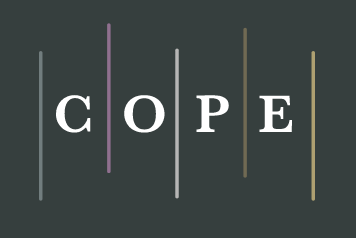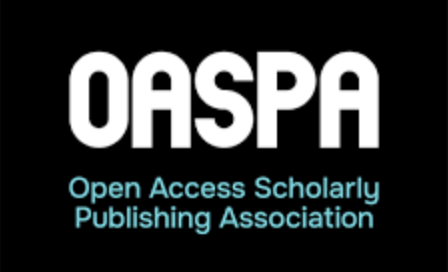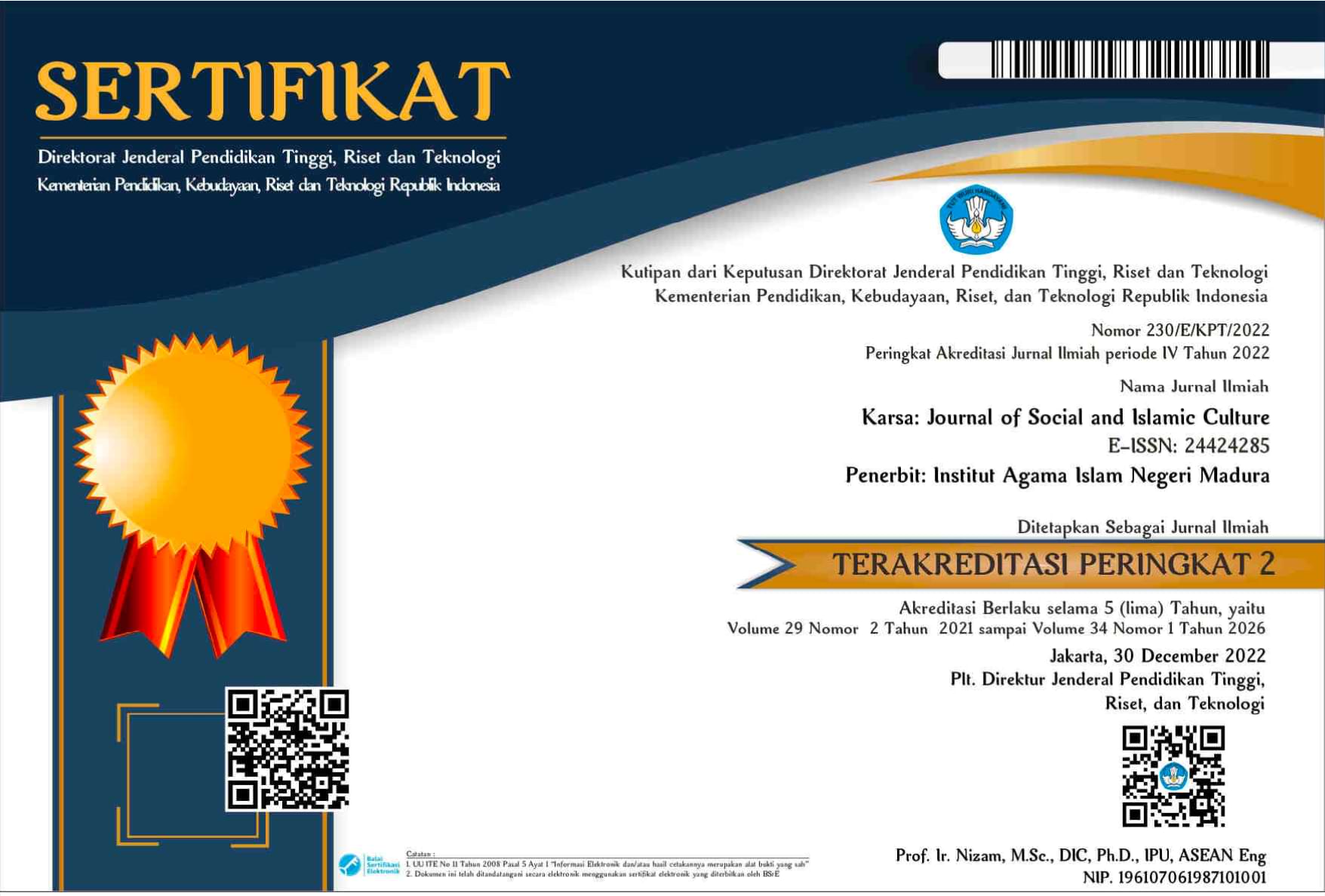The Perception of Mystical Advertising in Television Among Muslim Community (Study on Advertising of Elastex Paint Version “Rain-Handler”)
 Abstract views: 329
,
Abstract views: 329
,
 PDF downloads: 180
PDF downloads: 180
Abstract
Television has become an effective medium to educate and provide information to the public but misused television can be a powerful medium to spread negative messages. There are several types of television shows that actually cause concern in the community because of the wrong perception that was captured from the television show. The purpose of this study is to find out how the perceptions of the Muslim community to advertising of Elastex paint products that use a mystical approach to advertising on television. This research uses qualitative research approach with descriptive method. Sampling method using judgment sampling, that is from a Muslim audience. The research data was taken through depth interview technique to 10 selected informants. The viewer's perception of the Elastex paint ad showed that most viewers deplore the existence of a rain-handler that gives the impression of being a savior from the rain in the ad, which should be a savior is the power of God. The model in the Elastex paint ad is quite interesting and credible, only a few spectators perceive that the rain-handler does not fit the real character of the shaman. Overall the ads are good and display a creative form of advertising.
Copyright (c) 2017 by KARSA. All right reserved
DOI: 10.19105/karsa.v25i2.1385
Downloads
References
Ajzen, I. Attitudes, Personality and Behavior. Mapping Social Psychology. 2nd ed. Berkshire New york: Open university press. 2005.
Ardianto, Elvinaro. Public Relation Praktis. Ed. Pertama. Jakarta: Widya padjajaran. 2009
Baqi, Abdul, Muhammad. Kumpulan Hadits Shaheh Bukhari Dan Muslim. Yogyakarta: Insan kamil. 2015.
Barkin, Gareth. “Commercial Islam in Indonesia: How
Television Producers Mediate Religiosity Among National
Audiences.” International Journal of Asian Studies 11(1)
(2014):1-24
Belch, Belch. Advertising and Promotion: An Integrated Marketing Communication Perspective. New York: Mcgraw Hill. 2009.
Bungin, Burhan. Sosiologi Komunikasi. Jakarta: PT Kencana
Prenada Media Group. 2009.
Calder, Bobby J., Isaac, Mathew S . and Malthouse, Edward C.
“How to Capture Consumer Experiences: A Context-Specific
Approach To Measuring Engagement.“ Journal of Advertising
Research 56(1) (2016):39-52
Cyril, Ernest. and Mohsin, Muhammad. “Attitudes towards
offensive advertising: Malaysian Muslims' views.”
Journal of Islamic Marketing 1(1) (2010): 25-36
Darwanto, S.S. Televisi Sebagai Media Pendidikan Penulis. Yogyakarta: Pustaka belajar.2007
Effendi, O.U. Ilmu, Teori, Dan Filsafat Komunikasi. Bandung: Citra
Aditya Bakti. 2003.
Ellinor, L, and G Gerrad. Dialogue : Rediscover The Transforming Power of Conversation. New york: John Wiley.1998
Elyria, Kemp., Bui, My. and Chapa, Sindy. “The Role of
Advertising in Consumer Emotion Management.”
International Journal of Advertising, 31(2) (2012): 339–353.
Hussina, Rosninawati., Hayati, Sofia. and Nubailah, Siti.
“Islamic Representation in Television Advertising and Its
Impact on Modern Malay Muslim Women.” Procedia -
Social and Behavioral Sciences 211 (2015):890–895
Jaana, Simola, and Hyana Jukka. “Perception of Visual Advertising in Different Media: From Attention to Distraction, Persuasion, Preference and Memory.” Frontiersin. 2014. Accessed September 17, 2017. http://journal.frontiersin.org/article/10.3389/fpsyg.2014.01208/full.
John, Burnett, and Moriarty Sandra. Introduction Tomarketing Communication: An Integrated Approach. London: Prentice hall international.2006.
Kirdar, Yalqin. “Mysticism in Subliminal Advertising.” Journal Academic Marketing Mysticism Online (JAMMO). 2012. Accessed September 17, 2017. http://www.journalacademicmarketingmysticismonline.net
Kotler, Philip, and Gary Amstrong. Prinsip-Prinsip Pemasaran. 12th ed. Jakarta: Erlangga.2008.
Maniua, Andreea-Ioana and Zaharira. “Advertising creativity : The right balance between surprise, medium and message relevance,” Procedia Economics and Finance 15 ( 2014):1165 – 1172
Morissan. Jurnalistik Televisi Mutakhir. Tangerang: Ramdina perkasa.2010
Mudaa, Mazzini., and Musaa, Rosidah.” Celebrity Entrepreneur
Endorsement and Advertising Effectiveness.” Procedia -
Social and Behavioral Sciences 130 ( 2014 )11–20.
Nida Qamar, Nida. and Nawaz, Rab. “Advertising Practices in
Pakistan According to Islamic Marketing Principles: A Study
of Demographic Antecedents in Measuring Perception of
People.” Middle-East Journal of Scientific Research 21 (12)
(2014):41.
Rakhmat, Jalaludin. Psikologi Komunikasi. Bandung: PT Remaja Rosdakarya.2009.
Reinartz, Werner. And Saffert , “Creativity in Advertising: When
It Does Works and When It Doesn’t,” Harvard Business
Review (2013):86. Accessed September 17, 2017.
https://hbr.org/2013/06/creativity-in-advertising-when-
it-works-and-when-it-doesnt
Ridout, Travis, and Erika Flower. “Explaining Perceptions of Advertising Tone.” Sagepub. 2010. Accessed September 17, 2017. http://journals.sagepub.com/doi/abs/10.1177/1065912910388189.
Simkins, Ronald. and Kelly, Thomas M. “Religion and Identity.”
Journal of Religion and Society 13(2016): 113-123
Sutisna. Perilaku Konsumen Dan Komunikasi Pemasaran. Bandung: PT. Remaja Rosdakarya. 2012.
Tafsir, Ahmad. Ilmu Pendidikan Dalam Perspektif Islam. Bandung: PT. Remaja Rosdakary. 2010.
Tanimu, Ahmed Jibril. "Reviewing the Concept of Advertising
from the Print Media Perspectives." Journal of Creative
Communications 12, No 3, (2017):53.
The journal operates an Open Access policy under a Creative Commons Non-Commercial Share-Alike license. Authors who publish with this journal agree to the following terms:
- Authors retain copyright and grant the journal right of first publication with the work simultaneously licensed under a Creative Commons Attribution License that allows others to share the work with an acknowledgement of the work's authorship and initial publication in this journal.
- Authors are able to enter into separate, additional contractual arrangements for the non-exclusive distribution of the journal's published version of the work (e.g., post it to an institutional repository or publish it in a book), with an acknowledgement of its initial publication in this journal.
- Authors are permitted and encouraged to post their work online (e.g., in institutional repositories or on their website) prior to and during the submission process, as it can lead to productive exchanges, as well as earlier and greater citation of published work.



















